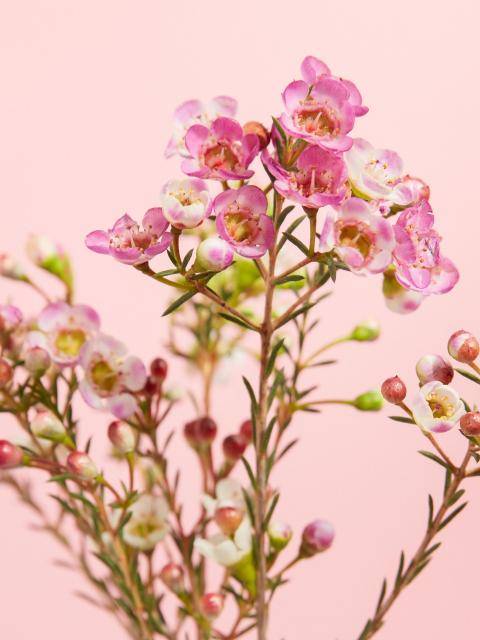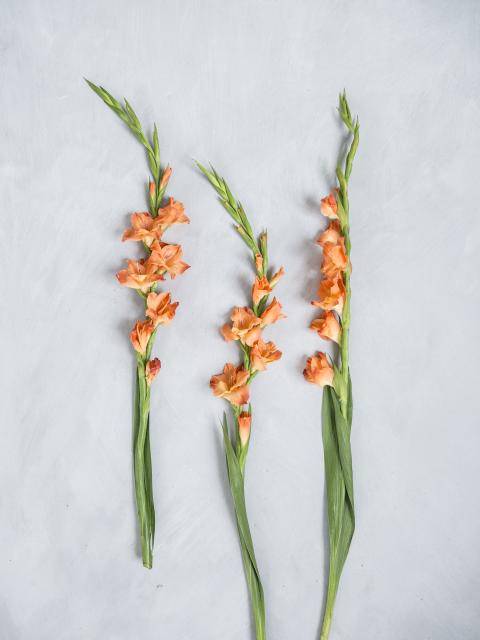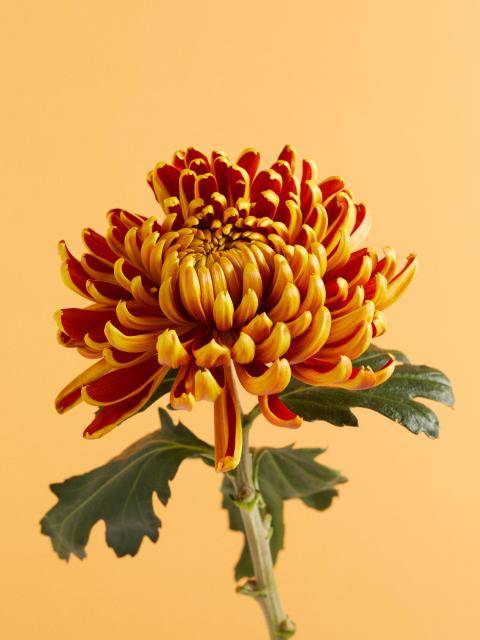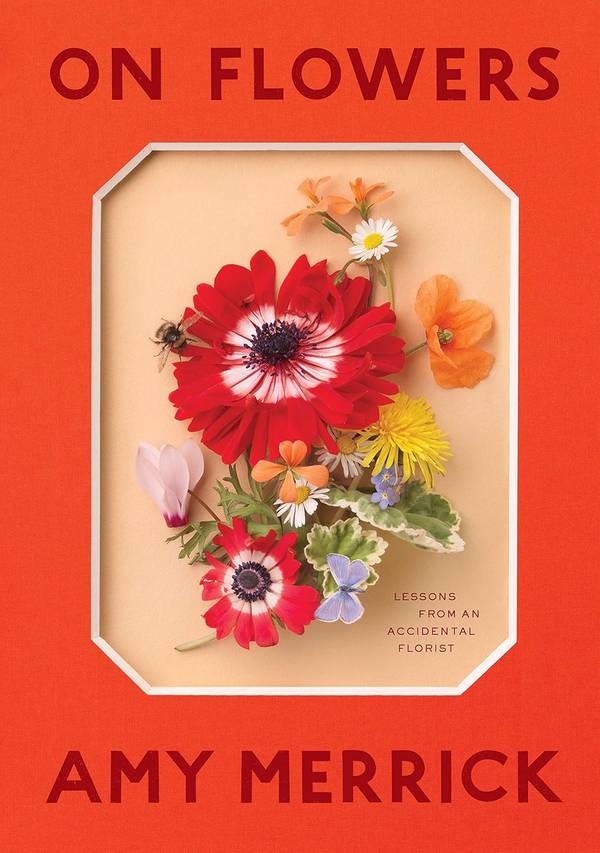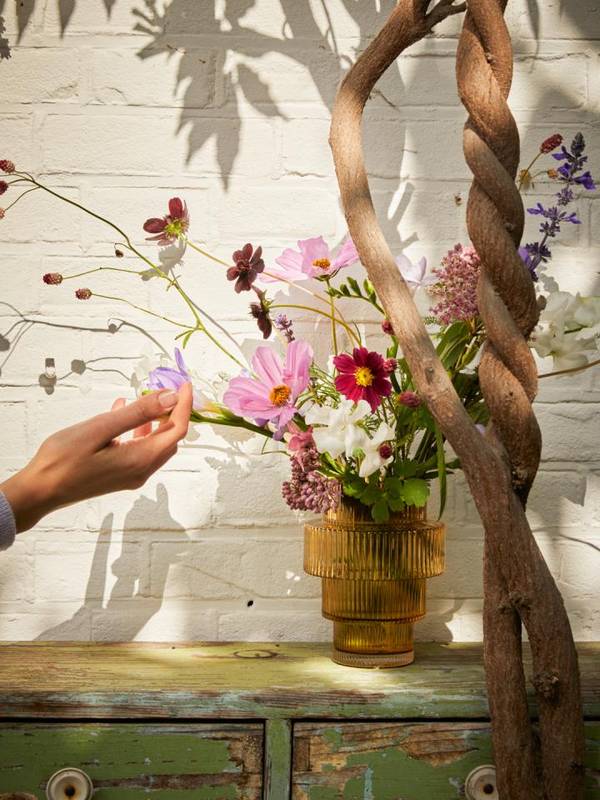
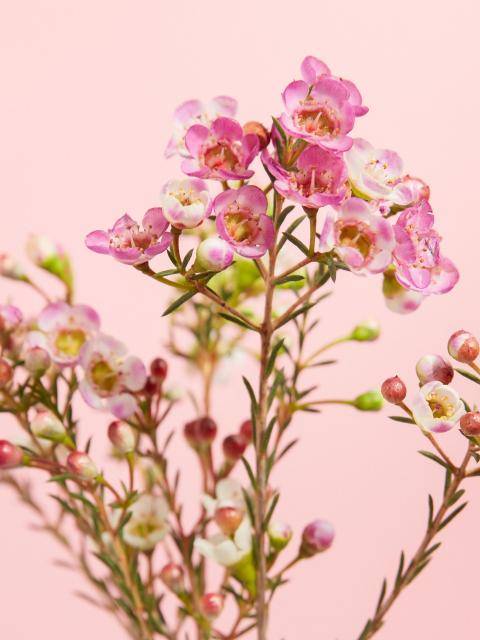
Caring for waxflowers
To fully enjoy your waxflowers:
- Give the waxflowers a clean vase with clean water.
- Add shrub food to the water for a longer vase life.
- Trim 3-5 cm off the stems diagonally with a sharp and clean knife.
- Regularly top the vase up with water.
- Do not place your waxflowers in a draught, in full sun, near a heater or next to the fruit bowl.
Colours and shapes
At the top of the waxflower branch you'll find many cheerful flowers grouped together in umbels: a flower cluster with stalks of equal length growing out of the same central point. Each flower has five radiating petals in either white, pink or purple. The dark brown branches are some 30 centimetres long and are covered with needle-like leaves. Both the flowers and the leaves of the plant are coated in a layer of waxy substance, which means it is rich in oils.
Symbolism
Waxflower's long vase life and the crown of flowers makes the sprig a popular choice in Australia. The symbol of a successful, happy wedding, many occasions are brimming with waxflowers, from the bouquet to table centrepiece.
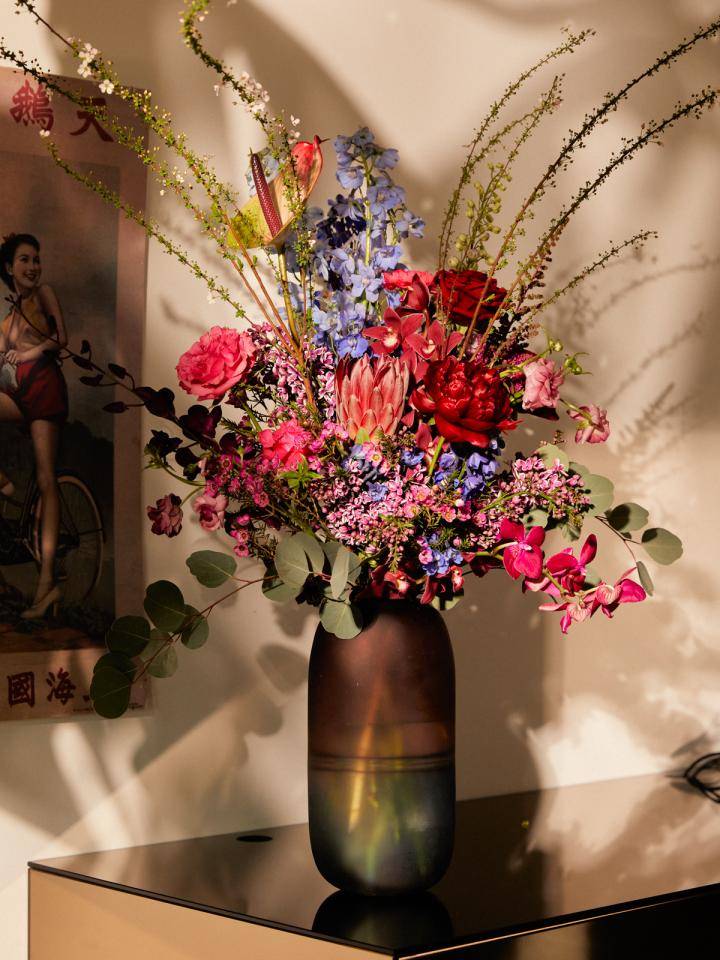
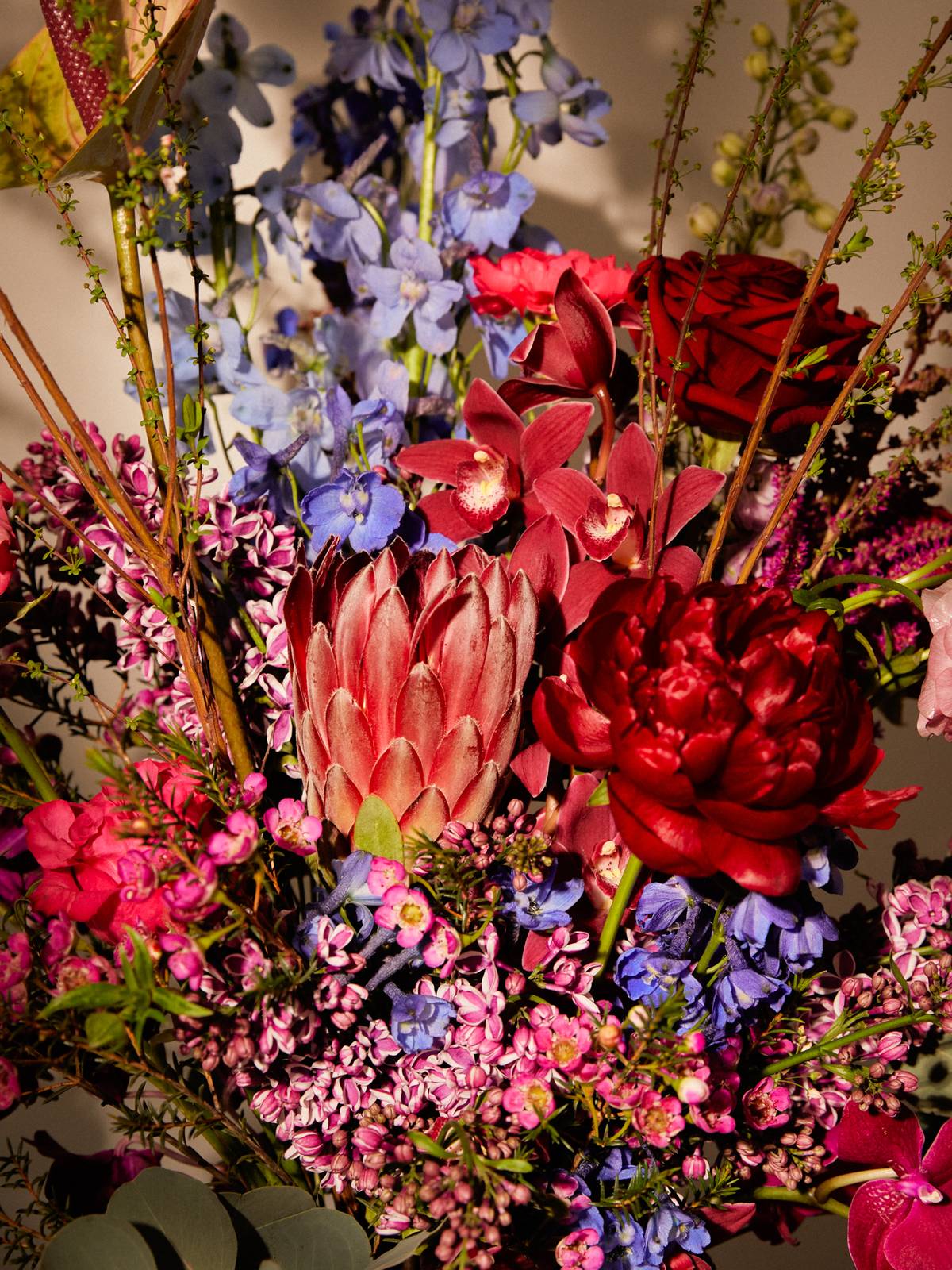
Origin
The waxflower originally comes from the south west of Western Australia. French botanist René Louiche Desfontaines gave the plant genus the botanical name Chamelaucium in 1819. There are currently fourteen species of waxflower.
